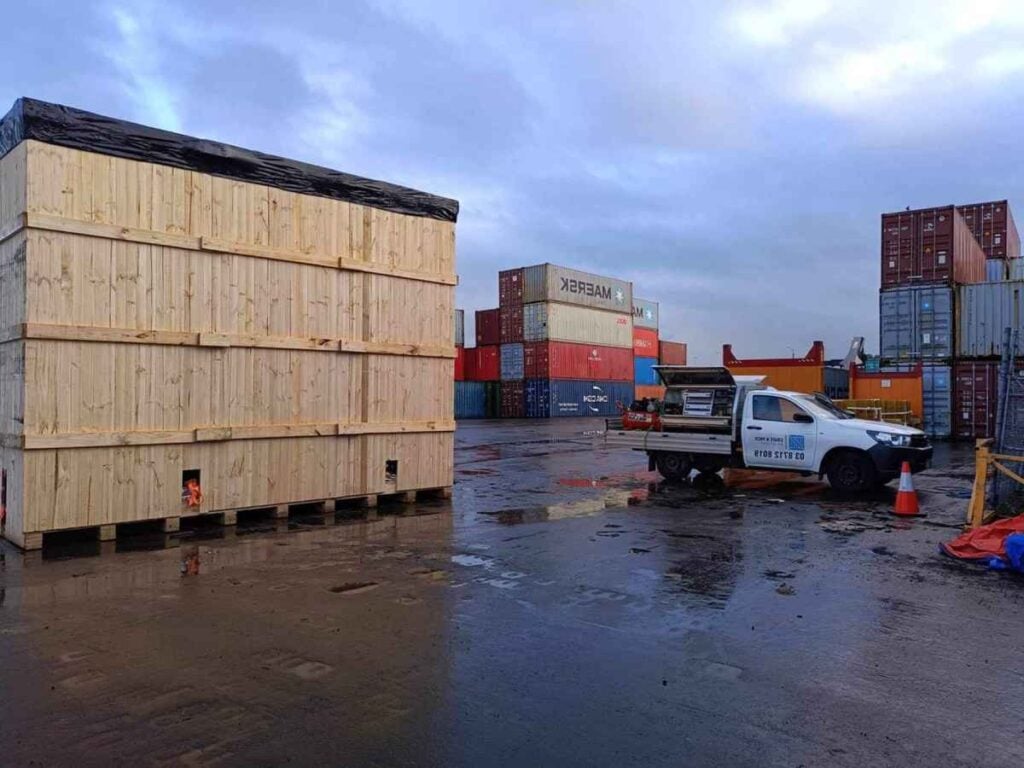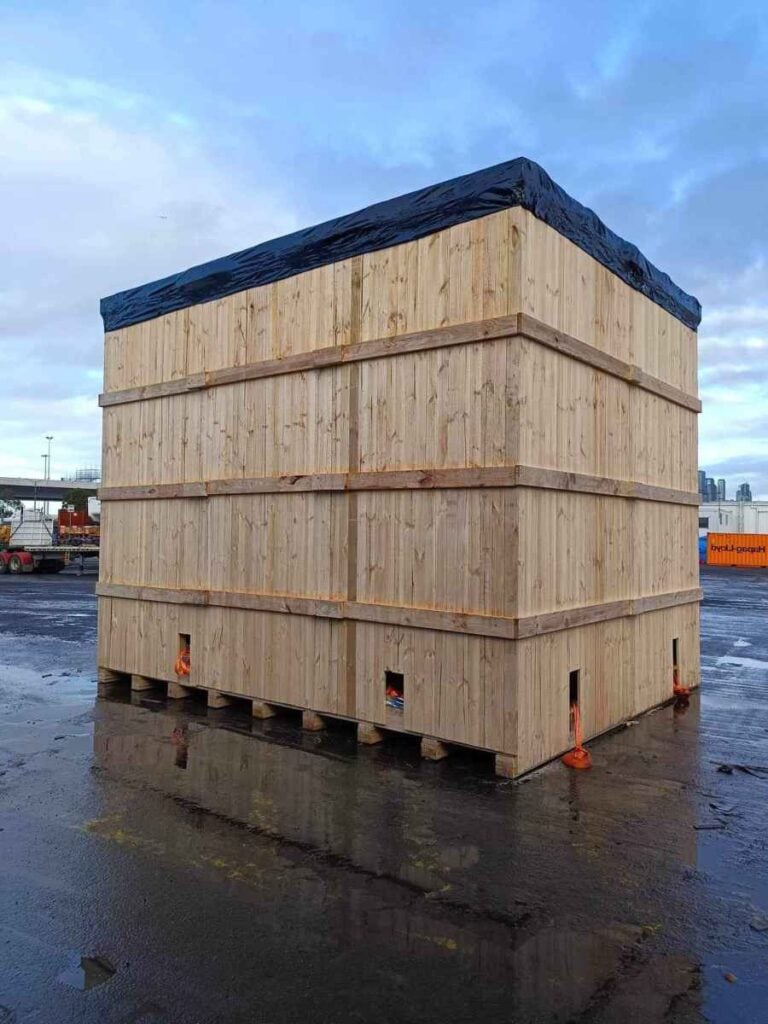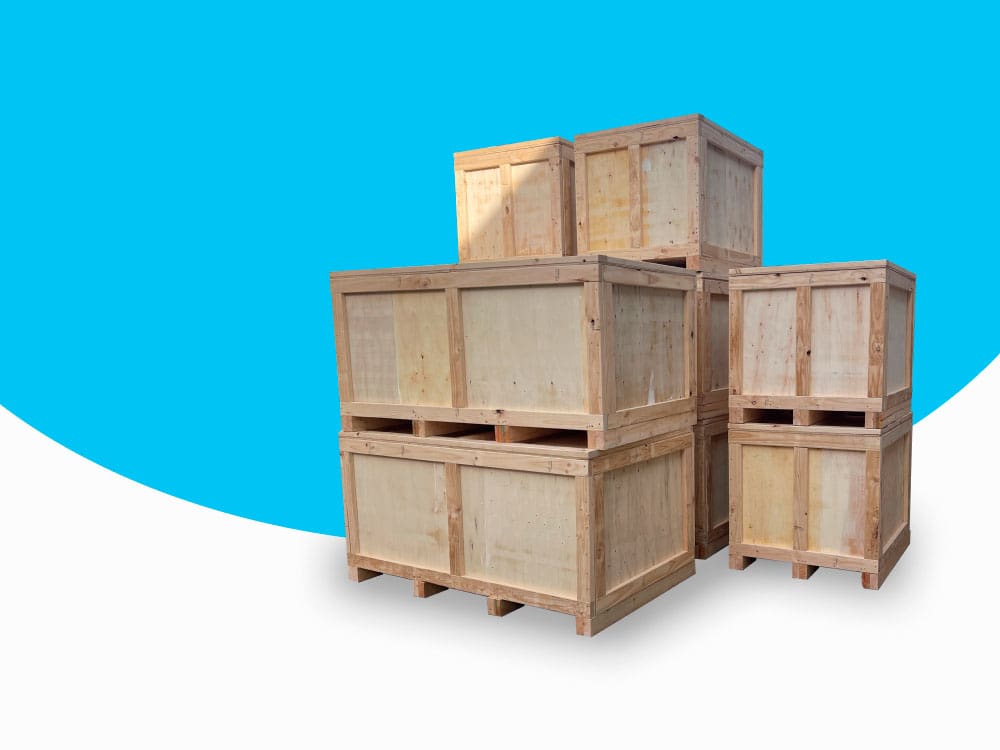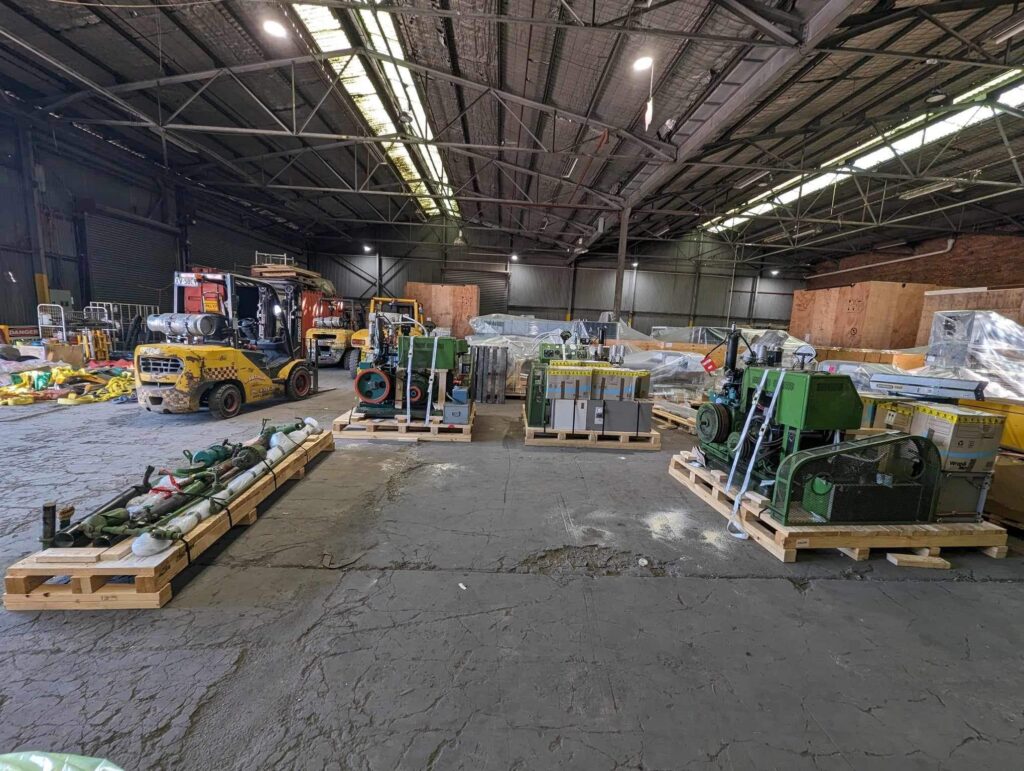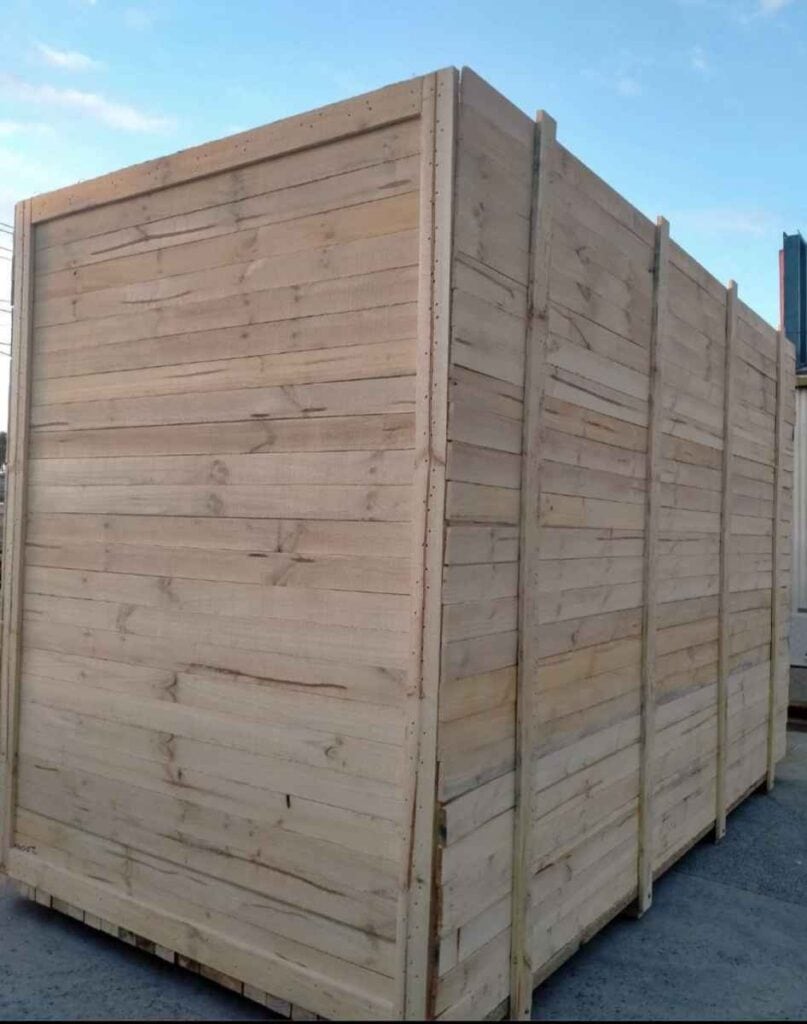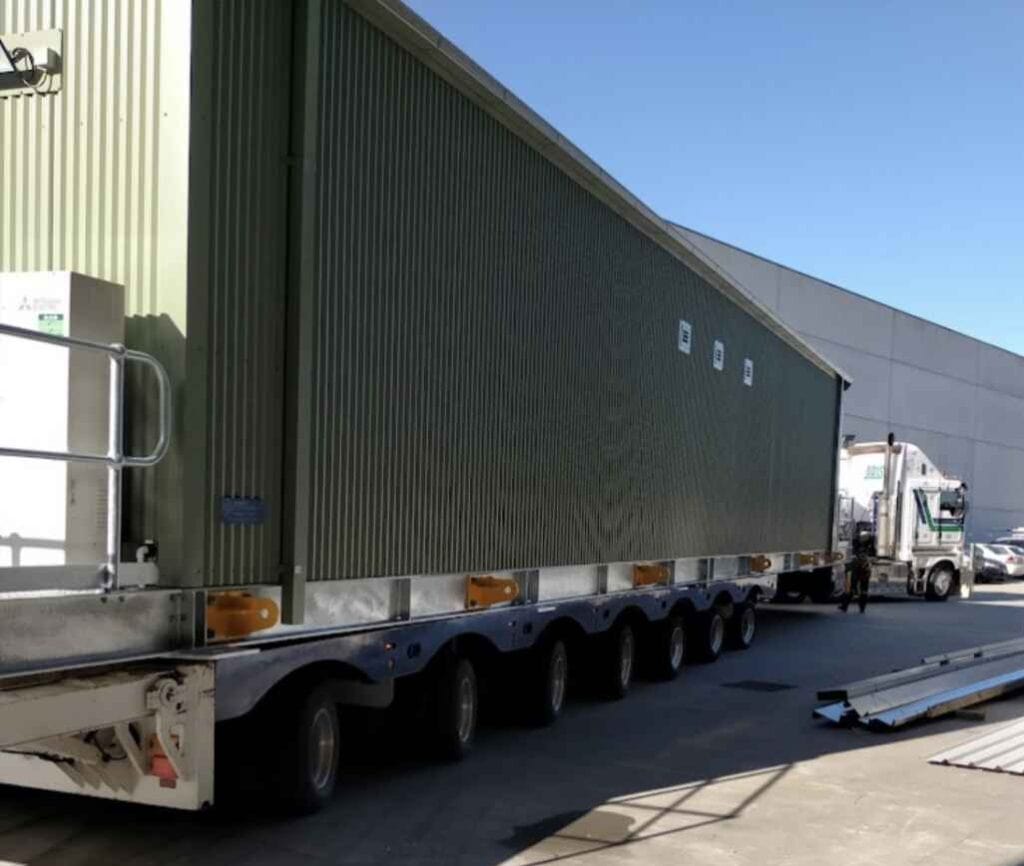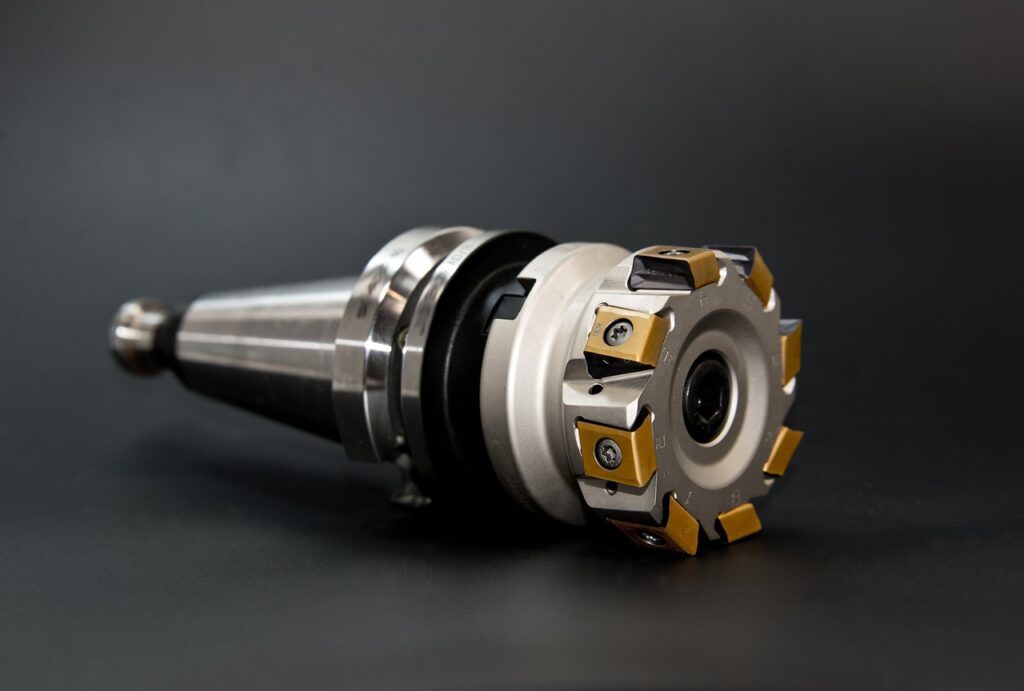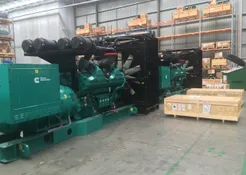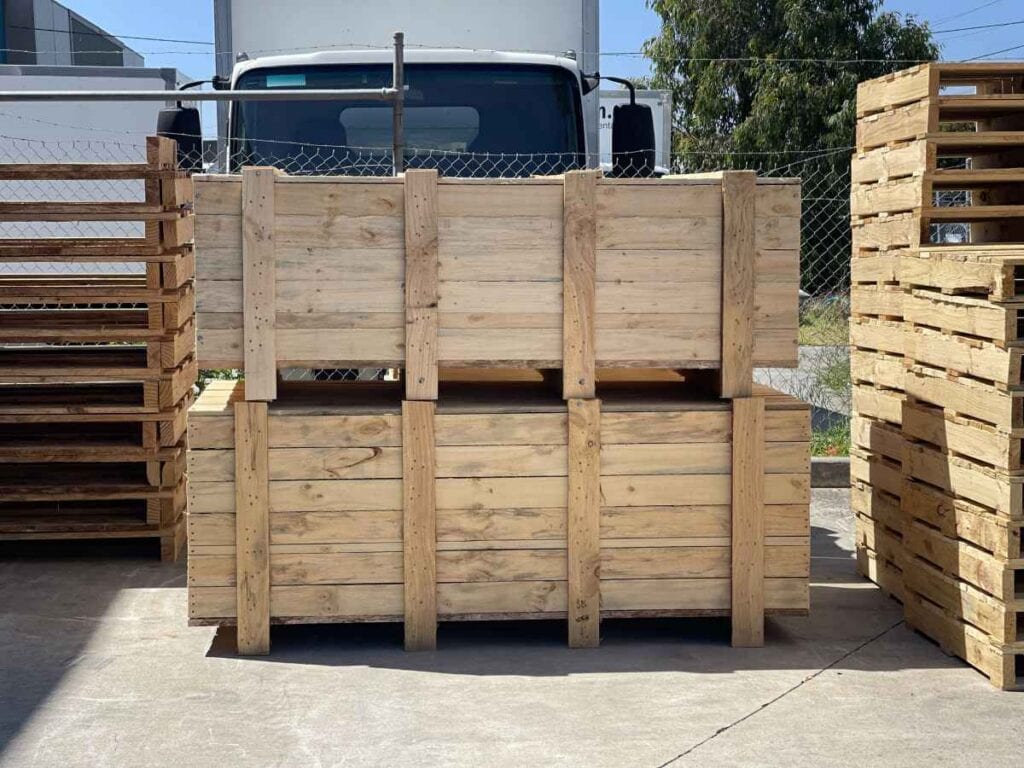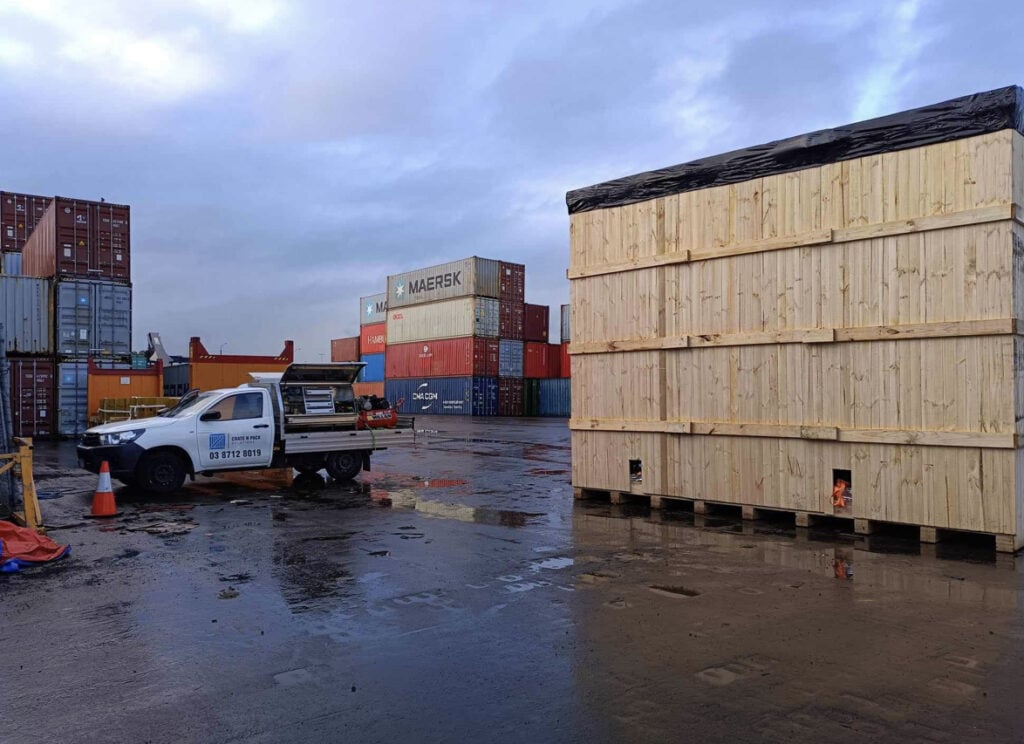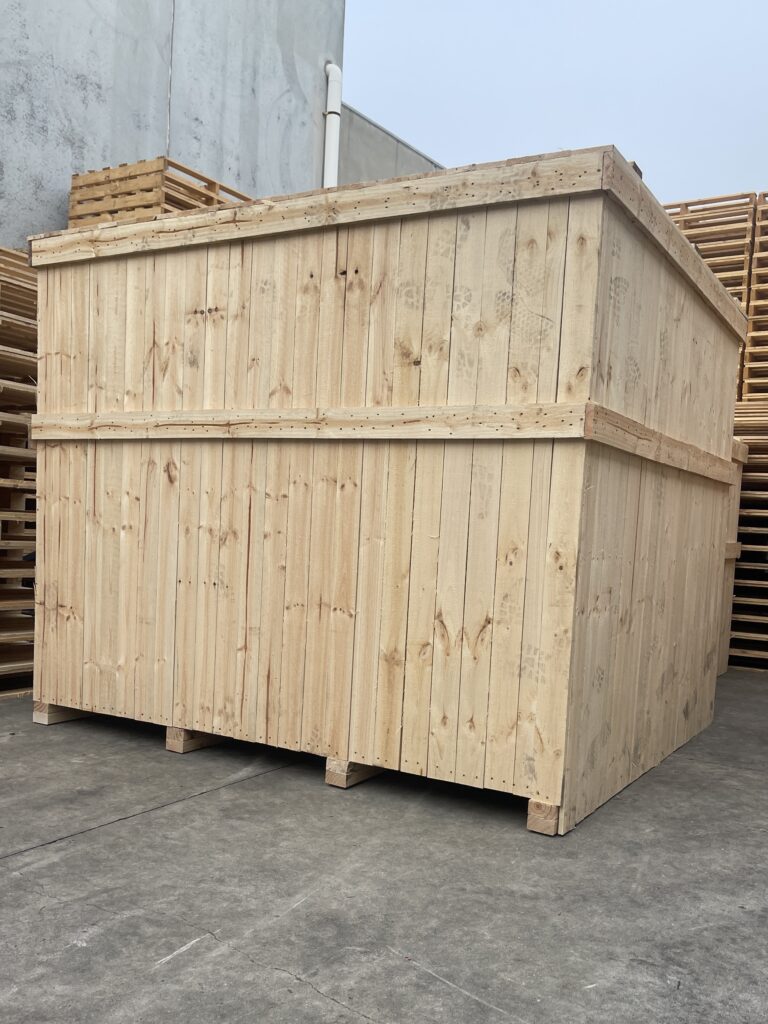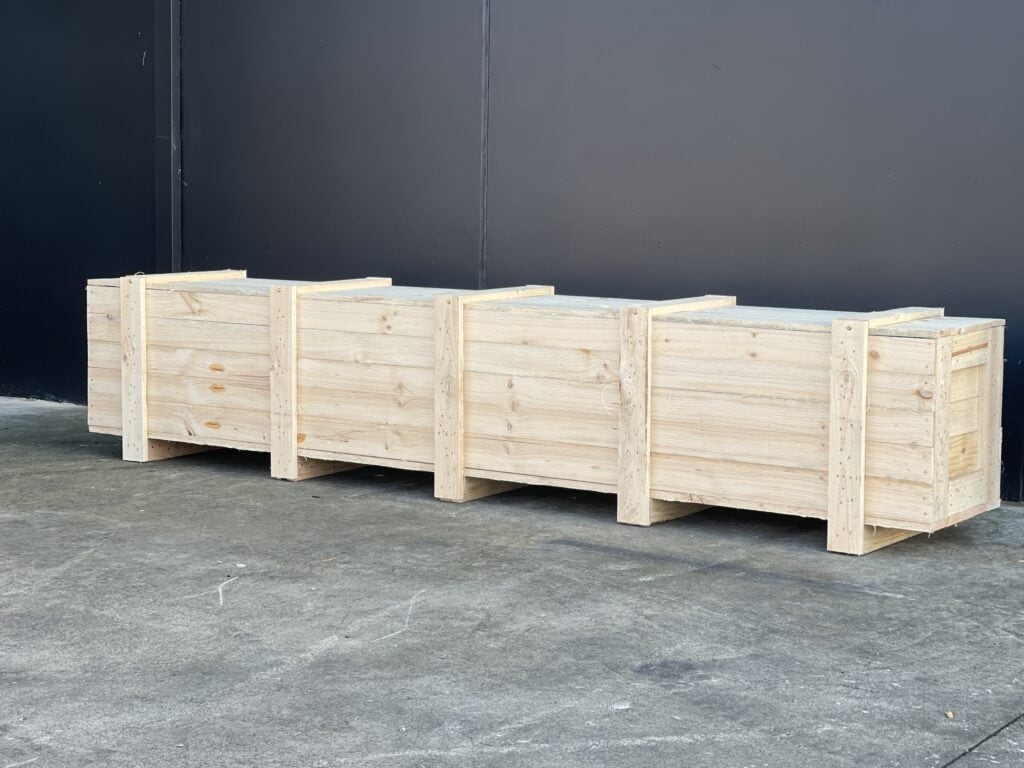Pallets are an essential part of the transportation and storage industries. They're crucial to the smooth operation of warehousing and shipping. There are two common phrases that come up while talking about pallets: "Skid Pallets" and "Pallets."
This comprehensive guide will explore the details that differentiate these two things and provide insights into their distinct features and applications. In addition, we will compare and contrast the pros and cons of each option.
What Is A Pallet?
The pallet has replaced every other method of transporting and storing cargo. A typical pallet measures 48 inches by 40 inches and can hold up to one thousand kilogrammes of freight. A pallet features a flat bottom deck, distinguishing it from a skid. This facilitates forklift transport but makes dragging the pallet more difficult than skids.
The bottom deck improves cube efficiency and stability and makes stacking pallets for storage a breeze. It would be more challenging to balance the load without the bottom deck, increasing the risk of damage to the shipment during loading and unloading with a forklift.
Pallets, sometimes called conventional pallets or wooden pallets, are rectangular platforms that contain openings on all four sides and both top and bottom deck boards. The transportation and warehousing industries around the world rely on these adaptable structures.
Benefits Of Pallets
Wooden or traditional pallets (standard pallets) have many uses and benefits in the logistics and material handling industries.
Varieties And Materials
Pallets can be made from various materials, including plastic, wood, metal, and composites. The most popular option here is wooden pallets.
Their low price makes them a popular choice amongst commercial establishments. In addition, wooden pallets are well-known for their remarkable durability, guaranteeing they can endure the rigours of transit and storage.
This makes them a trustworthy option for many industries and uses.
Protection
Pallets are essential for the safe transportation of products because they provide a solid and secure base for loading and unloading. Pallet wrap and gusseted tubing are just two examples of the extra precautions that can be taken to ensure the safety of your shipment. These techniques reliably fasten items to the pallet, avoiding jiggling or shifting in transit.
Pallets prevent cargo from shifting about in a shipment and causing damage to its contents. Having this assurance of stability lessens the likelihood of damage from knocks and bumps and increases the likelihood that products will reach their destination in perfect condition.
Easy Handling
Pallets are designed to be easily moved and stacked, making the material handling process faster and safer. They can be used with various machinery for streamlined loading and unloading operations, including forklifts and pallet jacks. This compatibility reduces friction and speeds up processes in storage and shipping facilities.
Workers easily move standard pallets without worrying about dropping or damaging them, saving time and money. As a result, standard pallets improve operational efficiency and make logistics and storage facilities safer and more productive places to work.
Strength
Pallets are the most resilient compared to other transportation container types, especially cardboard boxes. They are distinguished by a tremendous strength that allows them to carry heavier weights without breaking. This strength is a major benefit since it permits more goods, particularly heavier ones, to be stacked on a single pallet. This improves the effectiveness of warehousing and shipping and protects the integrity of the transported items.
Pallets also have another significant benefit: they can be stacked. They serve as a pedestal, keeping whatever is placed on them safe from the elements and off the ground. When environmental variables threaten the safety of the cargo, this elevation becomes very important. In essence, pallets aid in the protection and tidiness of the commodities they support while increasing the strength and efficiency of material handling.
Transportation
One of the most significant benefits of using pallets is the ease with which things can be transported. Pallets are a game-changer in the logistics world because they facilitate the orderly transport of products.
One of their defining characteristics is the ease with which one may stack smaller goods, turning what could have been an unruly load into something more manageable.
Having the ability to stack has many advantages. The first major benefit is improved efficiency in stock-taking and inventory management. Businesses can streamline their supply chain operations by arranging things onto pallets for easier counting, categorising, and monitoring.
Additionally, pallets take extra precautions to protect the goods being shipped. Pallet protection techniques ensure that goods on pallets won't move while in transit. This will keep them from moving around or getting lost while being transported. When working with fragile or delicate items, this is of paramount importance.
Pallets also have standard dimensions and shapes, which makes working with them much easier. Standardised pallets are designed to work harmoniously with the forklifts and pallet jacks used in warehouses and distribution centres. This compatibility improves efficiency and security in the workplace, especially during loading and unloading. Pallets are designed to be easily moved and stacked thanks to their uniform dimensions, facilitating a smooth and efficient logistics chain.

Reusable
Pallets are extremely eco-friendly because of their incredible lifespan, which may be extended by reuse. These sturdy platforms typically make numerous travels back and forth between producers and consumers as they make their way along the supply chain. Usually, a pallet can go through dozens of cycles before showing symptoms of wear and tear that make it unusable.
This inherent longevity greatly lessens the frequency with which pallets need to be replaced, which in turn contributes to economic savings and a smaller ecological footprint. In addition, as pallets reach the end of their useful life and start to show signs of wear and tear, they are recycled so that they can be put to good use again, helping to reduce waste and promote environmentally sound practices.
Environmental Impact
Wooden pallets are well-known for their usefulness, but they also have certain drawbacks, such as a shorter lifespan and the possibility that they would end up in a landfill. Wear and tear over time reduces their durability, necessitating replacement. However, a significant movement is happening, with many businesses adopting environmental practices. They see the potential in recycling and reusing pallets and actively participate in recycling and reusing programmes.
Companies lessen their ecological footprint by fixing up and finding new uses for used pallets. Wooden pallets have a significant environmental impact. However, this method lowers waste and adds to responsible resource utilisation, displaying a dedication to eco-conscious practices.
What Is A Skid?
The skid serves as the first pallet. Despite their differences, "skid" and "pallet" are sometimes used interchangeably. A skid, in contrast to a pallet, has no base plate. The skid is an inexpensive alternative to the pallet that is easier to drag (because of less friction) because there is no bottom deck.
The skid's weight is now supported by the vertical slats or legs of its construction rather than the bottom deck. This gives the skid movement over a pallet, making the skid a viable alternative for transporting goods. The skid can also be utilised in a stationary setting and is frequently the basis for industrial equipment.
The ability to nest a skid for compact storage is yet another perk. Even though they're called "nestable pallets," these skids still lack a bottom deck and are technically incorrect. The skid's advantages and the pallet's convenience can be combined with the versatility of nestable pallets. However, skid pallets are a logistical tool that is less common but no less valuable.
Benefits Of Skid Pallets
Skid pallets, also known as single-deck pallets or skids, offer several advantages that make them a valuable choice in specific situations:
Single Deck Design
Skid pallets are easily distinguishable from normal pallets due to their unique, single-deck design. This unique style distinguishes them by doing away with the top deck boards, resulting in a less bulky and more aerodynamic overall design. Skid pallets save money since they don't have an expensive top deck board, which decreases their overall weight and complexity.
This streamlined build is great for when only the bare essentials of a pallet would do. Skid pallets are a practical solution for firms that value efficiency and cost-effectiveness in their material handling needs despite their limitations in areas where top deck boards would provide additional support.
Cost-Effective Solution
When it comes to material handling, skid pallets stand out as a solution that is both cost-effective and efficient. Its primary strength is the effectiveness of its basic layout. In contrast to their more complicated counterparts, skid pallets typically have one deck and lack the bottom deck boards. This simplified layout results in significant savings throughout production.
Skid pallets are cost-effective for organisations that want to avoid going on quality. Their low cost makes them a good option whenever more sophisticated features of normal pallets are superfluous. Whether you're a startup looking to cut costs on shipping and warehousing or a multinational organisation juggling massive quantities of goods, skid pallets are a flexible and affordable option.
Lightweight Design
The lightweight design of skid pallets is one of its defining characteristics. The repercussions of this weight disparity on enterprises' bottom lines, particularly in terms of transportation costs, are substantial. Skid pallets are more cost-effective in the logistics chain due to their lightweight design.
Companies looking to save money on logistics will find lighter pallets quite appealing. This weight advantage becomes extremely valuable when considering the overall impact of large-scale activities or long-distance shipments. Skid pallets give firms a financial leg up by allowing them to optimise costs while guaranteeing safe and efficient material handling.
Options For Customisation
Skid pallets are distinguished from other pallets in providing businesses with a solution that can be modified to meet their specific needs. These pallets are more adaptable than a one-size-fits-all solution. Skid pallets can be modified to meet the specific requirements of individual businesses. Size, material, and layout can all be tailored to meet the specific needs of a given shipment and operational context.
Skid pallets can be customised to match the unique demands of each company, whether they deal with small, oddly shaped commodities or have specific logistics requirements. Businesses may improve their material handling procedures and overall productivity because of this flexibility, which allows them to create a bespoke solution. Skid pallets provide a flexible and adaptable solution to the varying demands of today's businesses.
Space-Efficient
Skid pallets are highly advantageous due to their small dimensions, especially in confined storage areas. When it comes to making the most of limited space in busy warehouses or cramped storage facilities, skid pallets prove to be important tools. Their compact design is a clever answer to the problem of making optimal use of a company's limited storage space, as it makes stacking much easier.
Skid pallets may be easily stacked inside one another, allowing businesses to store more items in a smaller area. Skid pallets are a vital option for organisations that want to maximise their storage potential due to their significant space savings.
What To Think About When Selecting Pallets And Skids
- Pallet jacks and forklifts – Whether or not your skid or pallet is full, you will need to move it at some point. To ensure the smooth running of your operations, you must be familiar with the necessary handling and lifting equipment.
- Supply chain requirements – Whatever you use, be sure it works with the rest of your supply chain. The layout needs to be appropriate for your storage facility and your entire transportation network, including any segments managed by outside parties. Take a look at the shipping vehicles and containers.
- Shelving and racking– Full and empty Pallets require a place to call home in the warehouse, and racking and shelving are common ways to do so. Take into account the tools required to store fully laden pallets or skids.
- Materials used – Pallets can be constructed from various materials, such as plastic, metal, wood, and cardboard, while skids are typically constructed from plastic or cardboard. Material considerations may be especially important if your company is committed to green practices like recycling, sustainable sourcing, or the usage of reused pallets.
Conclusion
Pallets are rectangular platforms that are used in the shipping and storage businesses. They are also known as skid pallets or conventional pallets. They are 48 inches by 40 inches and can hold up to 1,000 kilogrammes of freight.
Pallets have a flat bottom deck, which makes them easier to move with a truck but harder to drag than skid pallets. The bottom deck makes the cube more stable and efficient, making it easy to stack pallets for storage.
In the logistics and material handling businesses, pallets are useful in many ways. They can be made from plastic, wood, metal, and alloys, among other things. People like wooden pallets because they are cheap and last a long time.
They give a stable base for loading and unloading and keep things from moving around while in travel. They are easy to move and stack, which makes the process of moving and stacking things faster and safer.
Pallets are the most durable type of shipping container because they can hold more weight without breaking. They can also be used as stands to keep things off the ground and out of the weather. Pallets make it easier to move goods in an organised way, which makes taking stock and managing inventory easier. They take extra care to protect things in transit, especially when they are working with fragile or delicate items.
Pallets are also good for the environment because they last a long time and can be used more than once. These sturdy platforms make many trips between producers and consumers, lowering the number of times pallets need to be replaced. This saves money and has a smaller impact on the environment. When pallets are no longer useful, they are recycled to cut down on waste and promote practises that are good for the earth.
Wooden pallets have a big effect on the earth, but eco-friendly practises like recycling and reusing are taking their place. Skids, also called single-deck pallets, are cheaper than pallets and are easier to move because they don't have a bottom deck. They can be used in stationary places and are often the base for industrial equipment. Skid pallets can also be stacked on top of each other to save space.

Skid pallets have many benefits, such as a single deck, low cost, light weight, the ability to be customised, and good use of room. Their simple design saves a lot of money during production, making them a good choice for businesses that want to handle materials in an efficient and cost-effective way. They can be made to fit specific needs, such as size, material, and layout, which can improve the way materials are moved and the total amount of work that gets done.
When choosing pallets and skids, you should think about things like pallet jacks and forklifts, needs for the supply chain, shelving and racking, and the materials used. Skids are usually made of plastic or wood, while pallets can be made of many different things. Material choices may be especially important for businesses that try to be green by recycling, buying from sustainable sources, or reusing pallets.
Skid pallets have many benefits, such as their single-deck form, low cost, ability to be customised, and use of space. By thinking about these things when choosing pallets and skids, businesses can lower their impact on the environment and help use resources in a responsible way.
Content Summary
- Pallets are crucial to the transportation and storage industries, making warehousing and shipping operations smooth.
- Skid pallets and pallets are commonly discussed terms in the logistics sector, each having distinct features and applications.
- A standard pallet measures 48 inches by 40 inches and can hold up to a thousand kilogrammes of cargo.
- Unlike skids, pallets feature a flat bottom deck that facilitates transport via forklift but hampers dragging.
- The bottom deck of a pallet improves cube efficiency and adds stability to the cargo.
- Pallets have openings on all four sides and feature both top and bottom deck boards.
- Pallets can be made from different materials, such as plastic, wood, metal, and composites.
- Wooden pallets are the most popular due to their affordability and durability.
- Pallets are essential for safe transportation, offering a sturdy base for cargo.
- Additional measures like pallet wrap and gusseted tubing can secure items to a pallet.
- The use of pallets minimises the likelihood of cargo damage during transport.
- Pallets are designed for easy handling and stacking, streamlining material handling processes.
- They are compatible with various machinery like forklifts and pallet jacks.
- Workers can easily move standard pallets, enhancing operational efficiency.
- Pallets outperform other transportation containers like cardboard boxes in terms of resilience.
- Their strength allows heavier loads to be stacked on them, improving shipping efficiency.
- Pallets elevate cargo off the ground, offering protection against environmental variables.
- Pallets have significantly streamlined logistics by allowing easy and orderly cargo stacking.
- Their stackability offers advantages in stock-taking and inventory management.
- Pallets have standard dimensions that facilitate compatibility with lifting equipment.
- Reusability of pallets contributes to economic savings and a smaller environmental footprint.
- At the end of their lifespan, pallets are often recycled, reducing waste.
- Businesses are increasingly participating in pallet recycling programmes to lessen their environmental impact.
- The term 'skid' is sometimes used interchangeably with 'pallet,' although they differ in design.
- Skids lack a bottom deck, making them easier to drag than pallets.
- The absence of a bottom deck allows skids to be used as the base for industrial equipment.
- Skids are nestable, making them space-efficient for storage.
- Skid pallets have a unique single-deck design that makes them lighter and less complex.
- The lack of a top deck board in skid pallets reduces their overall cost.
- Skid pallets are a cost-effective solution, particularly for startups and large-scale operations.
- Their lightweight design makes skid pallets more cost-effective for shipping.
- Skid pallets offer customisation options to meet specific business needs.
- Their compact design maximises storage potential, particularly in smaller facilities.
- When selecting between pallets and skids, consider the compatibility with existing lifting equipment.
- Align your choice with the supply chain requirements, including any segments managed by outside parties.
- Pallet and skid storage in the warehouse should be factored into the selection process.
- Skids are often made of plastic or cardboard, while pallets have more varied material options.
- Companies committed to sustainability should consider the material used in pallet or skid construction.
- Pallets improve efficiency in shipping and storage facilities, making them safer and more productive.
- The bottom deck of a pallet makes balancing the load easier, reducing the risk of damage during forklift operations.
- Pallets reduce the chance of cargo jiggling or shifting, ensuring products reach their destination in perfect condition.
- The strength of pallets allows more goods to be stacked, optimising warehousing space.
- The standard dimensions of pallets make logistics more efficient by harmonising with existing equipment.
- Pallets are extremely durable, going through dozens of cycles before showing signs of wear and tear.
- The lightweight design of skid pallets has a substantial impact on reducing logistics costs.
- Skid pallets can be modified in size, material, and layout to meet specific logistical requirements.
- The single-deck design of skid pallets is less bulky, making them more aerodynamic.
- Businesses can improve their material handling processes with the flexibility offered by skid pallets.
- Skid pallets can be easily nested, offering significant space savings in storage facilities.
- The adaptability of skid pallets makes them valuable for a range of industries with varying demands.

